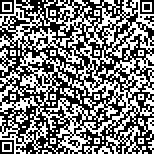| Quote
: |
李亚梅,宾雨飞,夏伯候,罗弘杉,徐佳,张鹏,龚云,廖端芳,林丽美.基于气质联用技术的补血益母丸治疗气血两虚小鼠的代谢组学研究[J].湖南中医药大学学报英文版,2021,41(1):53-60.[Click to copy
] |
|
| |
|
|
| This paper
:Browser 2177times Download 581times |
| 基于气质联用技术的补血益母丸治疗气血两虚小鼠的代谢组学研究 |
| 李亚梅,宾雨飞,夏伯候,罗弘杉,徐佳,张鹏,龚云,廖端芳,林丽美 |
| (湖南中医药大学药学院湘产大宗药材品质评价湖南省重点实验室, 湖南 长沙 410208;湖南中医药大学药学院湘产大宗药材品质评价湖南省重点实验室, 湖南 长沙 410208;湖南省株洲市攸县人民医院, 湖南 株洲 412300;株洲千金药业股份有限公司, 湖南 株洲 412007) |
| 摘要: |
| 目的 研究补血益母丸干预气血两虚模型小鼠内源性代谢物的变化,寻找与治疗气血两虚相关的代谢生物标志物,探讨补血益母丸对气血两虚模型的调节作用及可能机制。方法 采用眼眶放血和腹腔注射环磷酰胺建立气血两虚小鼠模型,造模成功后将动物分为模型组、乳酸亚铁组、四物汤组、补血益母丸低剂量组和补血益母丸高剂量组,借助气相色谱质谱联用(GC-MS)技术,对小鼠血清样本代谢物进行检测,采用主成分分析法(PCA)和正交偏最小二乘法判别分析(OPLS-DA)筛选差异代谢物。应用ELISA法检测小鼠血清中促红细胞生成素(EPO)、粒细胞-巨噬细胞集落刺激因子(GM-CSF)、肿瘤坏死因子α(TNF-α)和白介素2(IL-2)的含量。结果 对照组、模型组和补血益母丸治疗组血清样本能够得到很好的区分,共鉴定出14种潜在生物标志物,补血益母丸给药后气血两虚小鼠的内源性代谢物水平发生不同程度的回调。与正常组相比,模型组小鼠血清中TNF-α明显升高(P<0.01),IL-2、EPO和GM-CFS明显降低(P<0.01)。与模型组相比,补血益母丸低、高剂量组小鼠血清中TNF-α含量明显降低(P<0.05,P<0.01); IL-2、GM-CFS及EPO含量明显升高(P<0.05,P<0.01)。结论 补血益母丸可以使气血两虚小鼠的异常代谢有所恢复,其治疗作用可能与机体内14个差异代谢物及3条相关代谢通路的调节有关。 |
| 关键词: 补血益母丸 气血两虚 气质联用 代谢组学 |
| DOI:10.3969/j.issn.1674-070X.2021.01.010 |
| Received:June 02, 2020 |
| 基金项目:国家自然科学基金项目(81904269);福建省自然科学基金项目(2017J01833);福建中医药大学2019年校管课题护理学科开放课题(X2019040-学科)。 |
|
| Metabolomics Study of Buxue Yimu Pill on Treatment of Qi-Blood Deficiency Mice by Using GC-MS |
| LI Yamei,BIN Yufei,XIA Bohou,LUO Hongshan,XU Jia,ZHANG Peng,GONG Yun,LIAO Duanfang,LIN Limei |
| (Key Laboratory for Quality Evaluation of Bulk Herbs of Hunan Province, School of Pharmacy, Hunan University of Chinese Medicine, Changsha, Hunan 410208, China;Key Laboratory for Quality Evaluation of Bulk Herbs of Hunan Province, School of Pharmacy, Hunan University of Chinese Medicine, Changsha, Hunan 410208, China;People's Hospital of You County, Zhuzhou, Hunan 412300, China;Zhuzhou Qianjin Pharmaceutical Co., Ltd, Zhuzhou, Hunan 412000, China) |
| Abstract: |
| Objective To study the changes of endogenous metabolites of Buxue Yimu Pill in mice with qi-blood deficiency, find related metabolic biomarkers, and explore the effects and mechanism of Buxue Yimu Pill on qi-blood deficiency model. Methods The qi-blood deficiency mouse model was established by orbital exsanguination and intraperitoneal injection of cyclophosphamide. After successful modeling, the animals were divided into model group, ferrous lactate group, Siwu Decoction group, low-dose group and high-dose group of Buxue Yimu Pill. The serum metabolites of mice were measured by gas chromatography-mass spectrometry (GC-MS). Principal component analysis (PCA) and orthogonal partial least squares discriminant analysis (OPLS-DAa) were used to screen the different metabolites. The content of erythropoietin (EPO), granulocyte macrophage colony stimulating factor (GM-CSF), tumor necrosis factor-α (TNF-α) and interleukin-2 (IL-2) in mouse serum was detected by ELISA. Rseults The serum samples of the control group, model group and high-dose of Buxue Yimu Pill group could be well distinguished. A total of 14 potential biomarkers were identified. The levels of endogenous metabolites restored in varying degrees after the treatment of Buxue Yimu Pill. Compared with the control group, the serum levels of TNF-α in the model group significantly increased (P<0.01), while the levels of IL-2, EPO and GM-CFS in the model group significantly decreased (P<0.01). Compared with the model group, the serum levels of TNF-α in the mice with low and high dose of Buxue Yimu Pill were significantly reduced (P<0.05, P<0.01), while the levels of IL-2, GM-CFS and EPO were significantly increased (P<0.05, P<0.01). Conclusion Buxue Yimu Pill can restore the abnormal metabolism of qi-blood deficiency mice, and its therapeutic effect may be related to the regulation of 14 metabolites and 3 related metabolic pathways in the organism. |
| Key words: Buxue Yimu Pill qi-blood deficiency gas chromatography-mass spectrometry metabolomics |
|

二维码(扫一下试试看!) |
|
|
|
|


